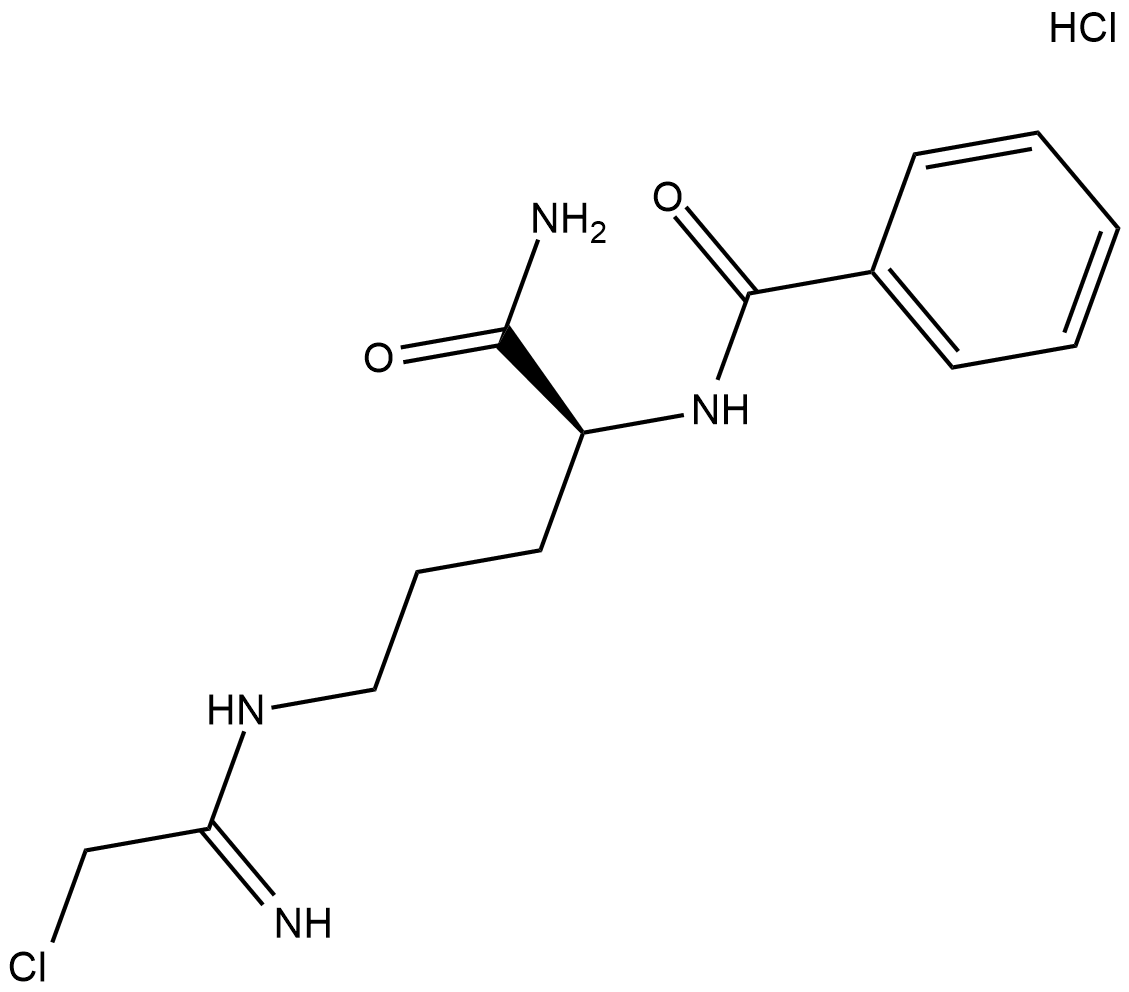Cl-Amidine (hydrochloride) |
| Catalog No.GC18925 |
Cl-amidine is an inhibitor of protein arginine deiminases (PAD; IC50s = 0.8, 6.2, and 5.9 uM for PAD1, PAD3, and PAD4 in vitro, respectively).
Products are for research use only. Not for human use. We do not sell to patients.

Cas No.: 1373232-26-8
Sample solution is provided at 25 µL, 10mM.
Cl-amidine (hydrochloride) is a peptidylarginine deminase (PAD) inhibitor, with an IC50 5.9 μM for PAD4.
Cl-amidine is a peptidylarginine deminase (PAD) inhibitor, with an IC50 of 5.9±0.3 μM for PAD4 and Cl-amidine is a bioavailable haloacetamidine-based compound that inhibits all the active PAD isozymes with near equal potency (kinact/KI=13,000 M-1.min-1 for PAD4)[1]. Cl-amidine induces apoptosis (identified as annexin V-positive/propidium iodide-negative cells) in such cells in a dose-dependent manner, indicating that Cl-amidine induces apoptosis of WBCs in vitro. Interestingly, the colon cancer cell line (HT29) is relatively resistant to apoptosis caused by Cl-amidine[2].
Significantly higher levels of colon inflammation in the 2% DSS than the 2% DSS+Cl-amidine mice are showed. The mean histology scores are 24.2±1.7 (SE) and 13.9±1.6, respectively. Most of the damage in the DSS-only group is in the distal colon, and this damage is suppressed with DSS+Cl-amidine. For the DSS-treated group, the mean colon length is 7.2±0.2 cm. In contrast, the average colon length of the DSS+Cl-amidine group is 8.4±0.2 cm, which is comparable to the mean colon lengths obtained for the wateralone and water+Cl-amidine groups (8.4±0.3 and 7.9±0.2 cm, respectively). The total distance and average speed of mice over a 96-h period are also measured. The results of these analyses demonstrate that the total distance is 5,072±381 and 3,190±401 m for the water-treated and DSS+Cl-amidine mice, but only 800±163 m for the DSS-only group. Similarly, the average speed on the wheel over the 4-day period is 6.2±0.63 and 5.3±0.58 m/min for the water-treated and DSS+Cl-amidine groups, but only 1.8±0.51 m/min for the DSS group[2].
References:
[1]. Yuan Luo, et al. Inhibitors and Inactivators of Protein Arginine Deiminase 4: Functional and Structural Characterization. Biochemistry. 2006 Oct 3; 45(39): 11727–11736.
[2]. Chumanevich AA, et al. Suppression of colitis in mice by Cl-amidine: a novel peptidylarginine deiminase inhibitor. Am J Physiol Gastrointest Liver Physiol. 2011 Jun;300(6):G929-38.
Average Rating: 5 (Based on Reviews and 12 reference(s) in Google Scholar.)
GLPBIO products are for RESEARCH USE ONLY. Please make sure your review or question is research based.
Required fields are marked with *




















